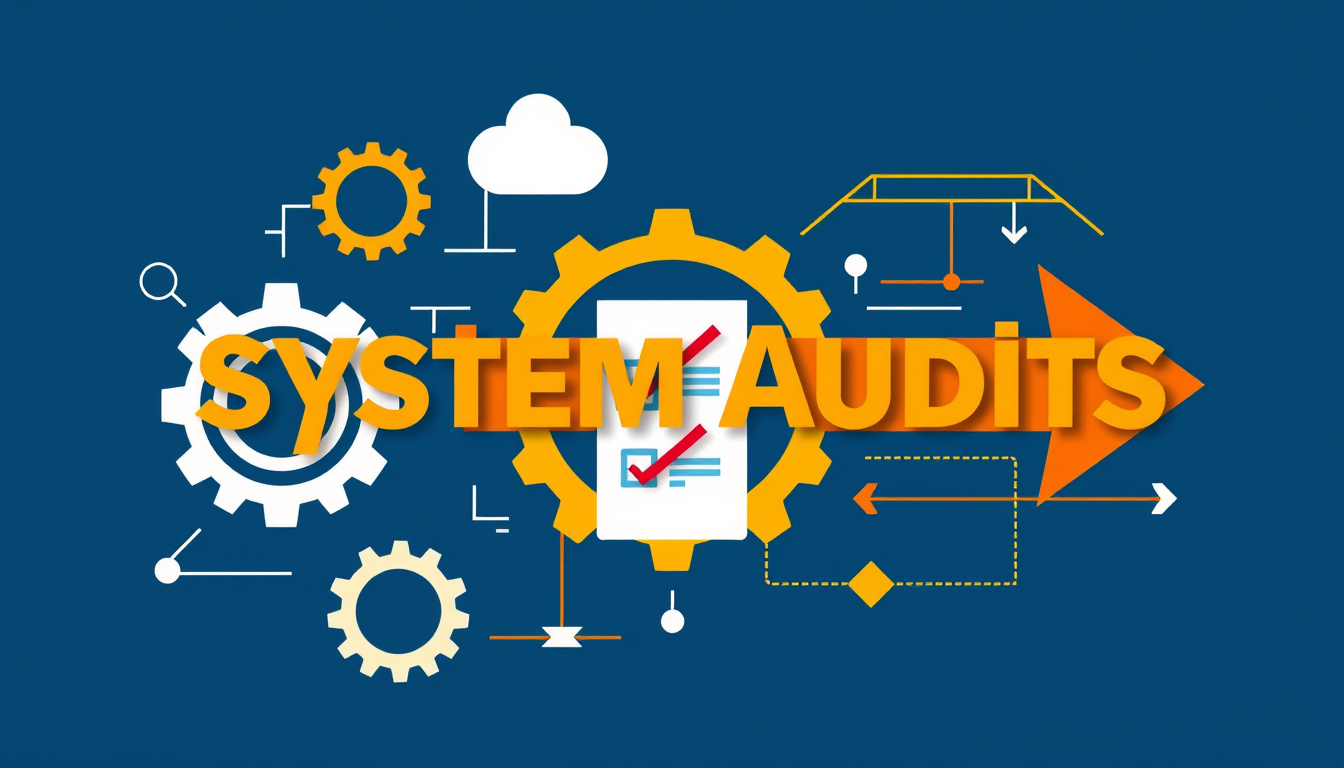In today’s rapidly evolving organizational landscape, system audits have emerged as vital tools for ensuring the efficiency and compliance of systems and processes. These audits not only help identify weaknesses but also provide a roadmap for enhancement. This guide explores the intricacies of system audits, their types, benefits, and best practices, designed to empower businesses with knowledge to improve performance.
What is a System Audit?
A system audit is a systematic examination of an organization’s systems and processes to ensure they are operating effectively, efficiently, and in compliance with relevant standards and regulations. This process involves evaluating everything from IT infrastructure and security protocols to data management practices and internal controls.
Conducted by qualified auditors, system audits assess how well an organization’s components align with predetermined standards. The findings from such audits offer valuable insights, which can lead to the identification of vulnerabilities and opportunities for improvement.
Types of System Audits
Organizations can conduct a variety of system audits based on their needs. Here are the most common types:
-
IT System Audits: Focus on evaluating the effectiveness of an organization's information technology systems, including hardware, software, and data security measures.
-
Financial System Audits: Assess the accuracy and legality of financial records, ensuring compliance with accounting standards and uncovering any potential fraudulent activities.
-
Operational System Audits: Examine operational workflows to identify inefficiencies and improve resource allocation and productivity.
-
Compliance Audits: Ensure the organization adheres to applicable laws and regulations, helping prevent legal penalties and reputational damage.
-
Quality Audits: Evaluate the integrity of quality management systems to ensure products or services meet established standards and customer expectations.
-
Environmental Audits: Assess compliance with environmental laws and regulations, focusing on sustainability and reducing the organization's ecological footprint.

Benefits of System Audits
Implementing regular system audits offers several significant advantages:
-
Identification of Weaknesses: By pinpointing areas of vulnerability, organizations can take corrective action to mitigate risks.
-
Efficiency Improvements: System audits often reveal inefficiencies in operations, suggesting areas for streamlining processes.
-
Enhanced Compliance: Regular audits ensure that organizations are informed about and compliant with changing legal and industry standards.
-
Risk Mitigation: By actively addressing potential risks, organizations can safeguard their assets and reputation.
-
Strategic Decision-Making: Findings from audits provide valuable data supporting strategic planning and operational decisions.
Key Steps in Conducting a System Audit
-
Preparation: Before starting, auditors define the scope of the audit, establish objectives, and gather necessary documentation.
-
Execution: Collect evidence through observations, interviews, and examination of records. This step is critical for evaluating system performance against standards.
-
Analysis: Analyze collected data to identify discrepancies or inefficiencies in processes.
-
Reporting: Compile a comprehensive report detailing findings, conclusions, and recommendations for improvement.
-
Follow-Up: Schedule a follow-up audit to ensure corrective measures have been implemented effectively.
Common Challenges of System Audits
While system audits are beneficial, organizations may face challenges during this evaluation process:
-
Resistance to Change: Employees may resist the changes recommended based on audit findings, affecting implementation.
-
Insufficient Resources: Conducting thorough audits requires investments in time and personnel, which can be a strain for smaller organizations.
-
Keeping Up with Regulations: Constantly changing regulations can make compliance audits complicated and daunting.
Tools and Techniques for Effective Audits
Utilizing the right tools and techniques can enhance the effectiveness of system audits:
-
Audit Management Software: Automates data collection and analysis, making the audit process more efficient.
-
Data Analytics Tools: Help auditors analyze large data sets to identify trends and anomalies.
-
Regular Training: Continuous education for auditors is critical for staying updated on industry standards and best practices.
Best Practices for System Audits
To maximize the benefits of system audits, organizations should adhere to the following best practices:
-
Establish Clear Objectives: Define what the audit aims to achieve to focus efforts effectively.
-
Engage Stakeholders: Involve employees at every level to ensure smoother execution and acceptance of audit recommendations.
-
Document Everything: Maintain comprehensive records of audit findings, processes, and corrective actions taken to facilitate transparency and accountability.
Conclusion
System audits are essential for organizations striving for efficiency, compliance, and competitive advantage. By understanding the various types of audits, their benefits, key steps, and best practices, organizations can make significant strides in enhancing their operational effectiveness. Embracing this comprehensive approach to audits not only helps mitigate risk but also fosters a culture of continuous improvement and accountability—critical components for long-term success in any industry.
Get started with your free Managed IT Services assessment today! Contact us at info@logicstechnology.com or by phone at (888) 769-1970.

